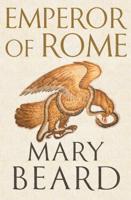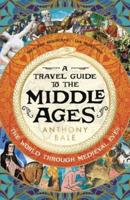Publisher's Synopsis
*Includes pictures
*Includes a bibliography for further reading
Carcassonne today is the capital of the Aude department in the Occitanie region of southwestern France, about 58 miles from Toulouse. It lies by the "eastward bend" of the glittering cobalt waters of the River Aude, which serves as a barrier between the two towns of the city: the Cité and the Ville Basse. It is the old Cité that attracts most of Carcassonne's visitors (3 million of them each year), for it houses the historic fortress that looks like it came straight out of a fairy tale and supposedly became the muse behind the captivating castles featured in Walt Disney's acclaimed 1959 classic Sleeping Beauty. But this breathtaking town is so much more than just the perfect spot for wedding shoots and social media narcissism, for it is a place that oozes medieval history.
This land is also home to several legends and local traditions. When the earth is drenched by heavy storms, the crumbling red soil drifts into the River Aude, staining the water with crimson. This beautiful, yet haunting phenomenon, which the locals call the "blood of the Cathars," is a symbolic reminder of the blood shed by these "heretics" at the hands of the Catholic Church.
Despite the controversial events, and their supposed heresy, it seemed that the fall of the Cathars brought an everlasting curse upon the region. As one unnamed farmer, documented by French medievalist Jean Duernoy, put it, "Since the heretics were chased away from Sabartes, there is no longer good weather in this area." Another notary from Tarn echoed his sentiments, asserting, "When the heretics lived in these lands, we did not have so many storms and lightning. Now that we are with Franciscans and Dominicans, the lightning strikes more frequently..."
In the 16th century, corruption, debauchery, and the general perversion of ethics were running rampant within the Roman Catholic Church. The public began to grow leery of the crooked church, and soon, they could no longer bite their tongues. Among the church's most vocal opponents was Martin Luther, whose publication of the 95 Theses gave rise to the Protestant movement.
This reformed brand of Christianity gradually spread throughout Europe, planting flags across the continent. France was among the first to latch onto the movement, and these new-wave Protestants became known as the "Huguenots." The exact origins of the Huguenot name is still disputed to this day, but most historians have agreed it is a French and German translation of the Swiss-German term, "eidgenossen," meaning "oath-fellowship." The Huguenots mostly resided in the southern regions of France, along with the northern regions of Normandy and Picardy. They shared quite a few similarities with the Protestant Walloons, who lived in what is now Belgium, but the two groups were unique communities. Even so, both groups frequently convened to worship together as refugees.
The Huguenots, whose belief system incorporated a blend of unorthodox Waldensian and Calvinist teachings, continued to bloom, which did not sit well with the authorities. Critics attributed the rise of Protestant-led riots to the no-good Huguenots. The Huguenots were known iconoclasts who rejected statues, paintings, idols, and other religious images, as often seen in the numerous statues and stained glass artwork in Catholic churches. Across Europe, rebellious Protestants seized Catholic churches and swiped all heretical images, destroying them with axes and hurling them into roaring bonfires. The string of ambushes included the 1562 Looting of the Churches in Lyon, which were followed by similar attacks in Zurich, Copenhagen, Geneva, and many more.






